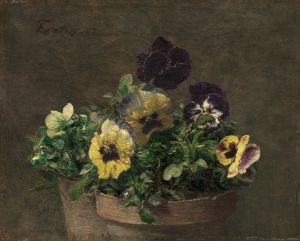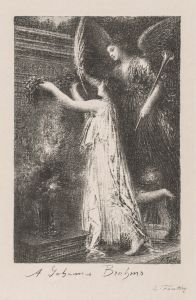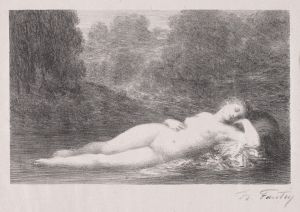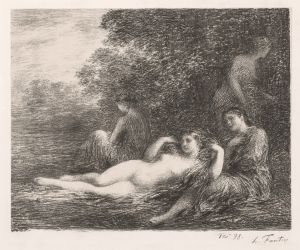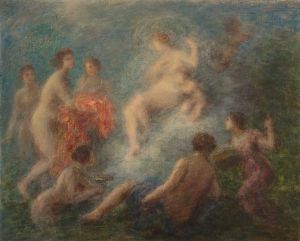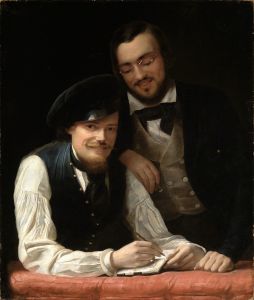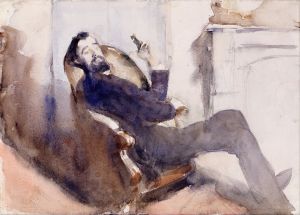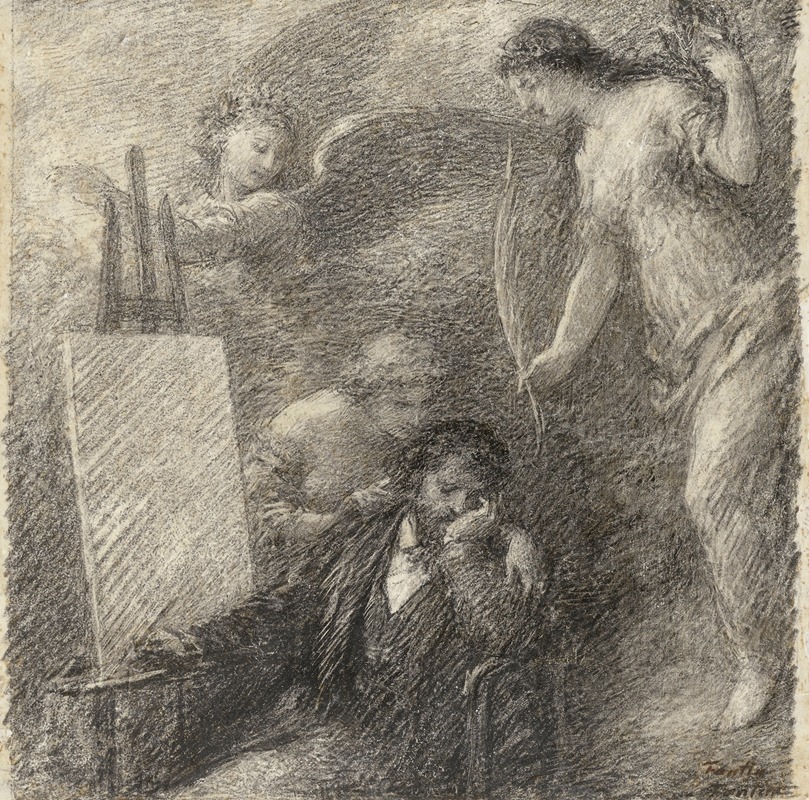
Le Découragement de l’artiste
A hand-painted replica of Henri Fantin-Latour’s masterpiece Le Découragement de l’artiste, meticulously crafted by professional artists to capture the true essence of the original. Each piece is created with museum-quality canvas and rare mineral pigments, carefully painted by experienced artists with delicate brushstrokes and rich, layered colors to perfectly recreate the texture of the original artwork. Unlike machine-printed reproductions, this hand-painted version brings the painting to life, infused with the artist’s emotions and skill in every stroke. Whether for personal collection or home decoration, it instantly elevates the artistic atmosphere of any space.
Henri Fantin-Latour, a French painter known for his still lifes and group portraits, created the painting "Le Découragement de l’artiste" (The Artist's Despair) in 1866. This work is a poignant representation of the emotional struggles faced by artists, capturing a moment of profound introspection and melancholy.
Fantin-Latour was born on January 14, 1836, in Grenoble, France, and he moved to Paris in 1841. He studied at the École des Beaux-Arts and developed a close association with several prominent artists of his time, including Gustave Courbet, Édouard Manet, and the Impressionists, although he did not fully embrace their style. Instead, Fantin-Latour is often associated with the Realist movement, and his works are characterized by their meticulous attention to detail and somber tones.
"Le Découragement de l’artiste" is a significant piece within Fantin-Latour's oeuvre, reflecting his introspective nature and the challenges of the artistic process. The painting depicts a solitary male figure, presumably an artist, seated in a dimly lit room. The artist's posture and expression convey a sense of deep contemplation and frustration, suggesting a moment of creative block or disillusionment. The sparse setting, with minimal background details, focuses the viewer's attention on the emotional state of the subject.
The painting's composition and use of light and shadow are masterful, highlighting Fantin-Latour's skill in creating mood and atmosphere. The subdued palette, dominated by earthy tones and muted colors, enhances the somber mood of the scene. This work is a departure from Fantin-Latour's more well-known still lifes and portraits, showcasing his ability to convey complex emotions through his art.
Fantin-Latour's career was marked by a dedication to his craft and a preference for working in solitude. Despite his connections with the avant-garde artists of his time, he remained somewhat aloof from the mainstream art movements, choosing instead to follow his own artistic path. His works were well-received in both France and England, where he exhibited regularly at the Salon and the Royal Academy.
"Le Découragement de l’artiste" is a testament to Fantin-Latour's ability to capture the inner life of his subjects. It resonates with many artists and viewers who have experienced moments of doubt and frustration in their creative endeavors. The painting remains an important part of Fantin-Latour's legacy, illustrating the universal struggle of the artist and the emotional depth that can be conveyed through visual art.
Henri Fantin-Latour continued to paint until his death on August 25, 1904, in Buré, France. His works, including "Le Découragement de l’artiste," continue to be celebrated for their technical excellence and emotional resonance, securing his place in the history of art.






